Softened butter might not sound like a big deal, but when it comes to baking, it can be the difference between cookies that spread into puddles and cookies with perfectly chewy centers. I’m breaking down exactly what “softened butter” means, plus my foolproof trick for perfectly softened butter in under 10 minutes.
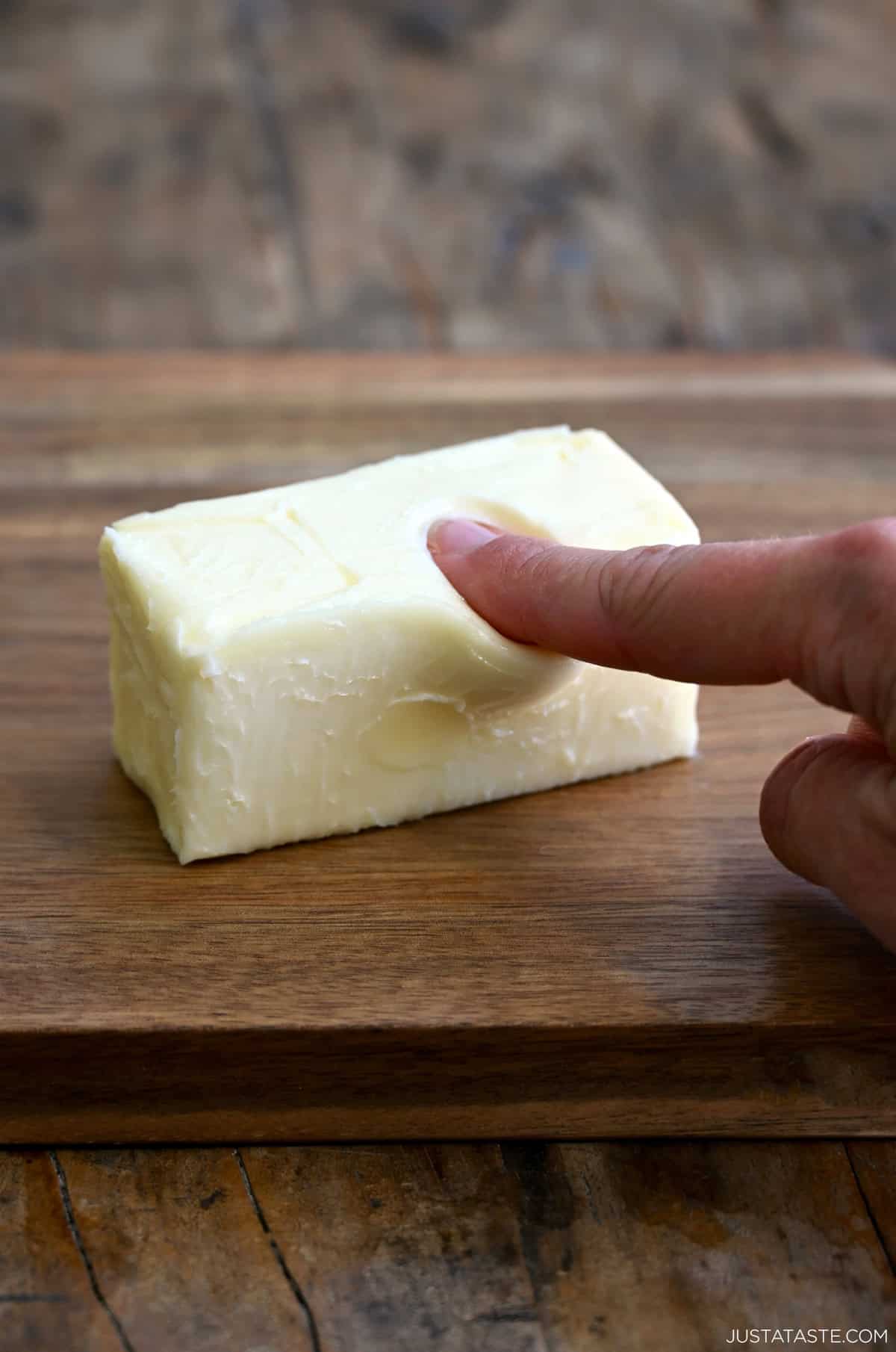

Wait! Don’t go! I know what you’re thinking, “Kelly… a whole post about softening butter?” Yes, it’s that important.
If you’ve ever had cookies bake up dense instead of chewy, or a cake that didn’t rise quite right, chances are your butter was the culprit.
In baking, softened butter doesn’t just mean not cold. It’s a key step in creating structure, incorporating air, and getting that perfectly fluffy, tender texture we’re all after in our baked goods.
Whether you’re rolling out cutout sugar cookies, mixing up pecan pie bars for the holidays, baking a chocolate cake for a birthday, or making coffee cake muffins for brunch, softened butter is non-negotiable.
And while I could absolutely give a whole TED Talk on the subject (What does “softened” actually mean? How do you know when it’s just right and not too soft? And what’s the fastest, most foolproof way to get there when you forget to take it out of the fridge … a.k.a. me, always), I’ll try to keep it brief.
What Softened Butter Means
Countless recipes call for “softened” or “room-temperature” butter, but what does that actually mean?
Softened butter should be cool to the touch, ideally between 65°F and 68°F. When you press it lightly with your finger, it should leave an indentation without your finger sinking in (just like in the photo above). Think playdough-soft, not melted-ice-cream-soft.
If it’s too cold, it won’t cream properly with sugar, which means dense cookies and heavy cakes.
If it’s too warm, it’ll start to separate (you’ll see that telltale oily sheen), and your dough or batter won’t hold its structure.
Now that we know what we’re aiming for, let’s talk about how to get there fast, because most of us (myself included!) forget to take the butter out ahead of time.

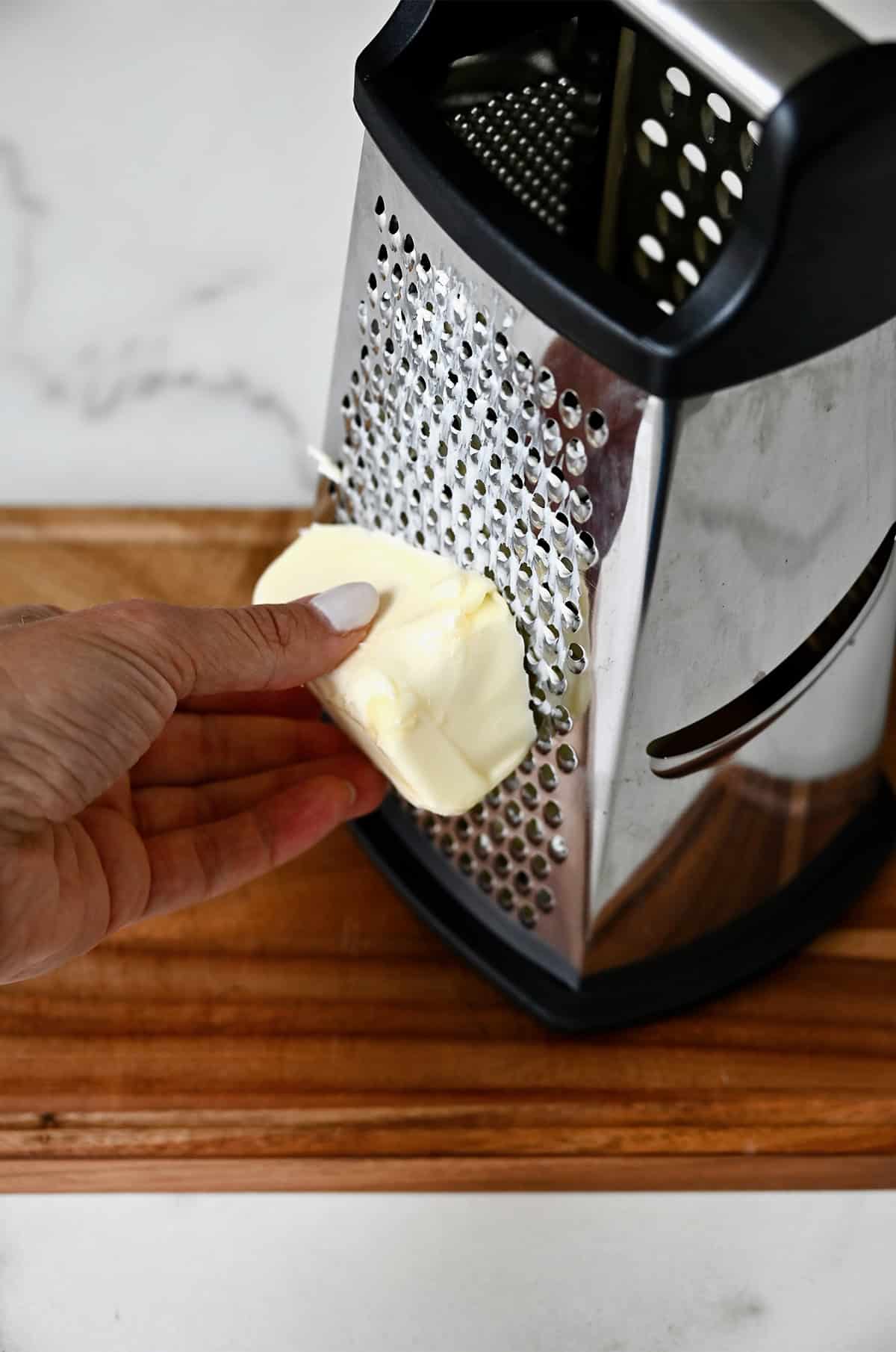
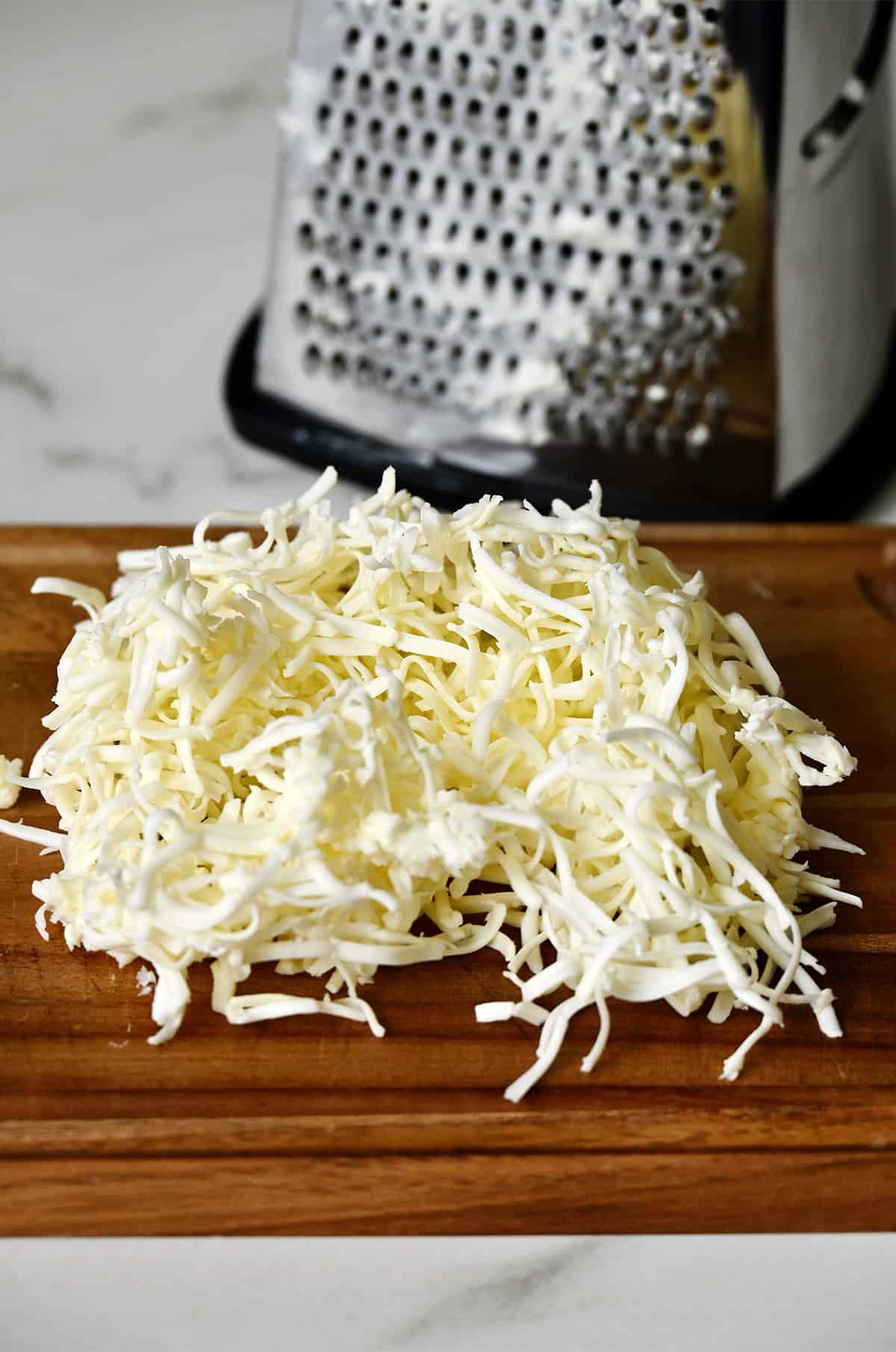
4 Fast Ways to Soften Butter
The best way to soften butter is to let it sit at room temperature on your counter for about an hour (the exact time depends on how warm or cool your kitchen is). This allows the butter to warm gradually from the inside out, so it softens evenly.
But let’s be honest, nine times out of ten, we either forget to take it out ahead of time or decide to bake on a whim at 9 p.m. and don’t have time to wait.
There are a million and one tricks out there for bringing butter to room temperature quickly. I put four of the most popular to the test, and spoiler alert: my go-to method involves a hot glass.
Method 1: Grate it
The quickest method that doesn’t involve heat. Grab your cold stick of butter and run it over the large holes of a box grater. The thin shreds will soften in just a few minutes.
Kelly’s Note: This trick works especially well if you’re creaming butter with sugar, as it gets a head start on that aeration process.
Method 2: Use a Hot Glass
Fill a heatproof glass with hot water, let it sit for a minute, then pour the water out and place the warm glass upside down over your stick of butter. The trapped heat will gently soften it in about 5 to 10 minutes.
Method 3: Pound It Out
Place your butter between two sheets of parchment paper or plastic wrap, and grab your rolling pin. Give it a few firm whacks, flattening it into a thin slab. More surface area = faster softening.
Kelly’s Note: This one’s great for relieving a little stress if your holiday baking list is a mile long.
Method 4: Microwave (Carefully!)
If you’re truly pressed for time, this method works—you just have to be very cautious. Place your butter on a cool plate and microwave on low power (30%) in 5-second bursts, rotating the stick each time (this will help prevent the bottom from melting while the top stays cold). Stop as soon as it’s soft to the touch but still holds its shape.

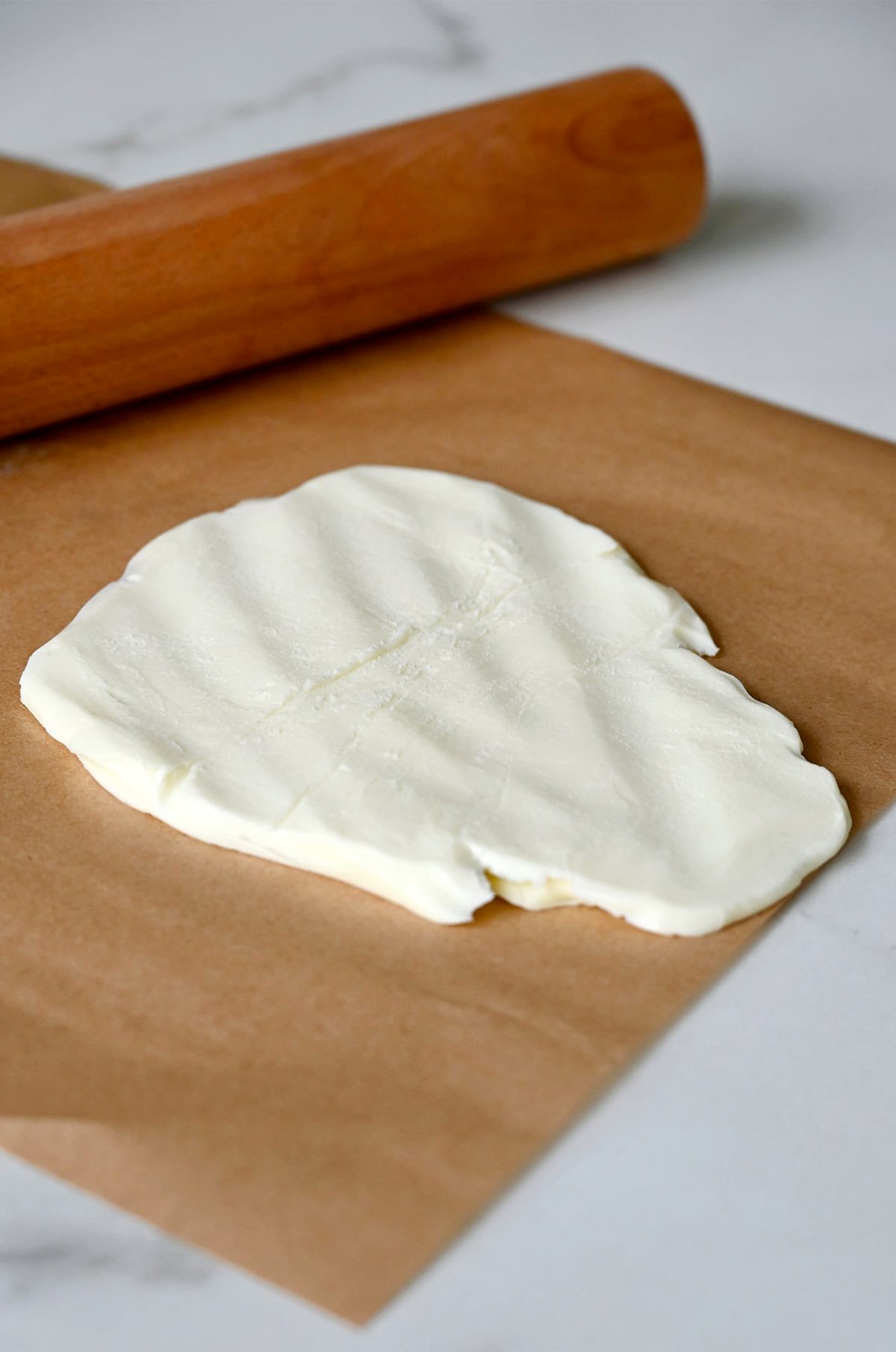
Can You Save Over-Softened Butter?
Yes, but (and this is a big BUT), maybe not in the recipe you intended to use it. Butter that’s too soft can’t properly trap air when creamed with sugar and will lead to dense, heavy baked goods and flat, greasy cookies.
Here’s what to do instead:
- Chill it: If the butter is just a little too soft, pop it in the fridge for 5 to 10 minutes until it firms up slightly but is still pliable.
- Repurpose it: If it’s completely melted, save it for a recipe that calls for melted butter, like sugar cookie icing (especially handy if you’re already baking cookies!), honey butter, homemade dinner rolls, brownies or quickbreads (looking at you, brown butter banana bread!).

Final Takeaway
Butter temperature is one of the most important factors in baking, right up there with measuring flour correctly. The difference between soft, cold and melted butter can completely change a recipe’s texture. And don’t miss even more of my tried-and-true cookie baking tips that will help you bake batch after batch of perfect cookies.

Ingredients
- 1 stick cold butter
- 1 heatproof glass
- Hot water
Instructions
- Fill a tall heatproof glass or mug with hot water. Let it sit for 1 minute to warm the glass.
- Pour out the water and quickly invert the hot glass over the cold stick of butter.
- Let the butter rest under the glass for 5 to 10 minutes. The radiant heat from the glass will soften the butter.
- Check by pressing gently; your finger should leave an indentation without sinking in. That’s perfectly softened butter!
Kelly’s Notes
- If you over-soften it: Pop it in the fridge for 5–10 minutes until it firms up slightly, or repurpose it in a recipe that calls for melted butter (brownies, quick breads, honey butter, etc.).
- Butter temperature is so important when it comes to baking that it’s one of my top holiday cookie baking tips.
- ★ Did you make this recipe? Don’t forget to give it a star rating below!
Did you try this recipe?
Leave a comment below with your star rating!
This post may contain affiliate links.




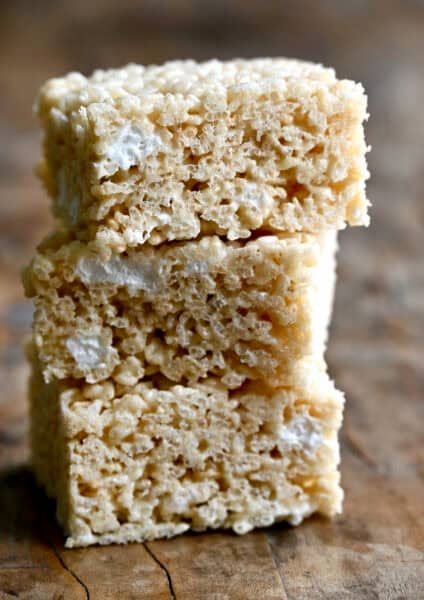

Just found your page, and am looking forward to the experience
Welcome, Sandra!
A great article. Thank you!
So glad you enjoyed it, Judy!